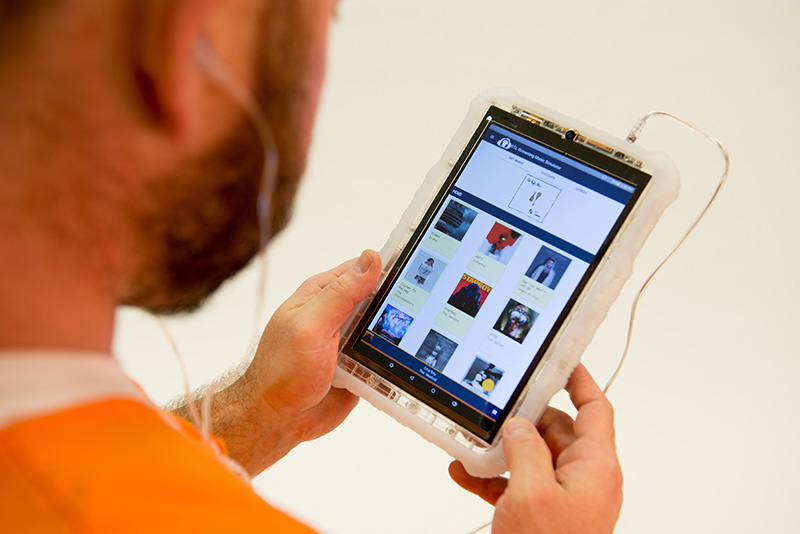
Keeping Calm and Carrying On: How Making Choices and Listening to Music Can Improve Inmate Behavior
By: Brian Peters, Vice President – Facility Product Management
November 8, 2017
(PR Newswire) Studies have shown that inmates who engage in meaningful activities that keep their minds occupied while incarcerated have fewer violent incidents and better mental health and recidivism outcomes once their term of incarceration is complete. This can include listening to music, reading, communicating with loved ones, and even something as simple as having access to images of the outside world. One study, published in the journal Frontiers in Ecology and the Environment, posited that prisoners who viewed ocean waves, waterfalls, aquariums, and other serene images were 26 percent less likely to be disciplined for violence than a control group.
In fact “Blue Rooms,” spaces where the calming videos are available, were named one of the top 25 inventions of 2014 by Time magazine. A Los Angeles Times article reported that select maximum-security units in Washington, Florida, and Alaska have set up their own nature viewing areas.
Unfortunately, a majority of inmates do not have access to streaming nature imagery. But that doesn’t mean facilities can’t reap the same benefit of fewer violent incidents.
Some experts say activities such as listening to music have similar calming benefits as viewing nature imagery. In a 2015 study, “The Impact of Relaxing Music on Prisoners’ Levels of Anxiety and Anger,” Drs. Bensimon, Einat, and Gilboa asserted that listening to relaxing music reduced anxiety and anger among a random sample of 48 incarcerated individuals. Dan Mears, a Florida State University criminology professor and expert in solitary confinement, told the Los Angeles Times that giving inmates any kind of free choice, such as reading a book or sitting in a wait room with music, could have the same calming effect.
“These are inmates who have almost no options,” Mears told the Times. “So, when you’re confronted with an opportunity to exercise an option, that can be calming.”
GTL recognizes the importance of giving inmates access to tools that can help reduce their chance of re-offending. Their Inspire® tablet program allows inmates to exercise options. Subscription applications allow inmates to make their own choices—whether they want to stream music, read eBooks, listen to the radio, play games, or do other activities.
Regarding music programming, inmates can choose from over 12 million songs with the Inspire® tablet, all curated for the corrections environment. Inmates can exercise free choice for on-demand music services right from their cells or other locations within a facility by having access to one of these secure devices.
It’s not just experts recognizing the benefits of music and tablets- inmates have spoken out as well. In a recent PBS Special one facility in Pima County, Arizona making use of GTL tablets, an inmate said, “There’s music on the tablet – it helps pass the time all around…It keeps everybody’s minds working. When you’re in jail, you have the same thing day in, day out. With these, you get books, you get music…they help everybody with their time.”
Brian Peters is a Vice President at GTL. He recently headed up a product team that managed the Inspire® tablet program and currently leads the product management team in enhancing GTL’s facility and inmate product portfolio. Brian is a 9 year veteran in the corrections technology space, has an undergraduate degree from The University of Wisconsin – Eau Claire, and an MBA from Hamline University.



